Dreaming of a ‘White Shavuot’ feast
Enjoy these 3 recipes to celebrate the “Feast of Weeks” – dairy, delicious, nutritious
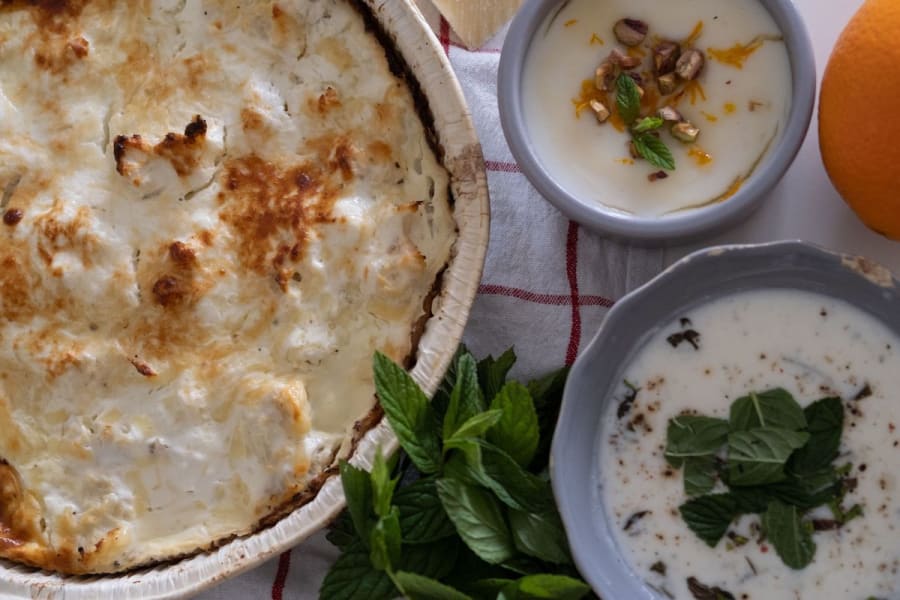
One of my best friends and I often talk about cooking and we enjoy exchanging our favorite recipes. Last time we spoke, we thought about what the ideal “white-themed” menu for the upcoming holiday of Shavuot would be. If you’re asking yourself, “Why only eat white-colored foods during this holiday,” just keep reading.
Countless ideas were offered up, however, to narrow it down, we agreed we first needed to decide what kind of cuisine we would commit to: Middle Eastern, Far Eastern, North or South American, Western or Eastern European flavors…and, of course, how we would combine them.
The possibilities seemed endless and, surprisingly, there are an extensive number of white-colored ingredients available in some of our favorite foods, such as cauliflower, onion, celery and parsley root, white eggplants, potatoes, white beans, mushrooms, radish, white tomatoes, oats, barley, rice, bananas, peaches, apples, lychees, cheeses, yogurts, as well as other dairy products.
Why do we eat only white-colored dairy products and refrain from eating meat on Shavuot?
Shavuot is the celebration of the end of counting the Omer, literally “a sheaf” after the Passover holiday. Omer also refers to the measured amount of grain that once was offered to the Temple in Jerusalem.
In the Book of Leviticus 23:15 we read, “From the day on which you bring the sheaf of elevation offering the day after the Sabbath you shall count off seven weeks. They must be complete.”
Therefore, in ancient Israel, our ancestors began harvesting barley on the second day of Passover, which also marked the beginning of counting the Omer. This count continued until the holiday of “weeks,” also known as Shavuot.
The word Shavuot (שָׁבוּעוֹת) means "weeks," but it also has another meaning: "oath".
This is the time when the Jewish people made an oath to God, and God made an oath to the Jewish people. Some believe that Shavuot commemorates the day when Jews became a nation by receiving the Torah, or the Law, the first five books of the Old Testament. Literally torah means "instruction" in Hebrew.
On the day of Shavuot, it is traditional to eat dairy products. Just as dairy is nutritious for the body, the Torah provides nourishment for the spirit; ‘the milk’ from God intended to feed the nation of Israel.
Another explanation of why we eat dairy products on Shavuot can be seen in the reference to Israel as “the land of milk and honey,” as God promised the land to the Jews to establish Israel as it is written in the book of Leviticus 20:24
“Hence I have said to you, ‘You are to possess their land, and I Myself will give it to you to possess it, a land flowing with milk and honey.’ I am the Lord your God, who has separated you from the peoples.”
It also reminds us of the liberation of the children of Israel from physical slavery – in Egypt – and how it led to spiritual freedom after the Exodus, when they were able to receive God's instructions.
Whatever the reason behind the tradition, it is a universal practice among Jewish people all over the world to eat dairy and white-colored food on Shavuot.
And now, we present a Middle Eastern lineup that won’t leave any meat eaters hungry: a soup, main dish and dessert
Each of these courses can be prepared ahead of time and served cold; interestingly enough, some of them are meant to be served cold.
We would love for our ALL ISRAEL NEWS readers to give one or all of these recipes a try!
"Beteavon!" (Hebrew for Bon Appetit).
Armenian Yogurt Soup
The first course is an Armenian yogurt soup. The first time I tasted it, I was in Jerusalem at a small restaurant in the Old City on a scorching hot summer day, and it saved my life. I will never forget the cold, sour, savory and super-light soup, nor the smile of the Armenian woman who ran the restaurant. Later on, I got the recipe from an Armenian friend and this is how her grandmother prepared it.
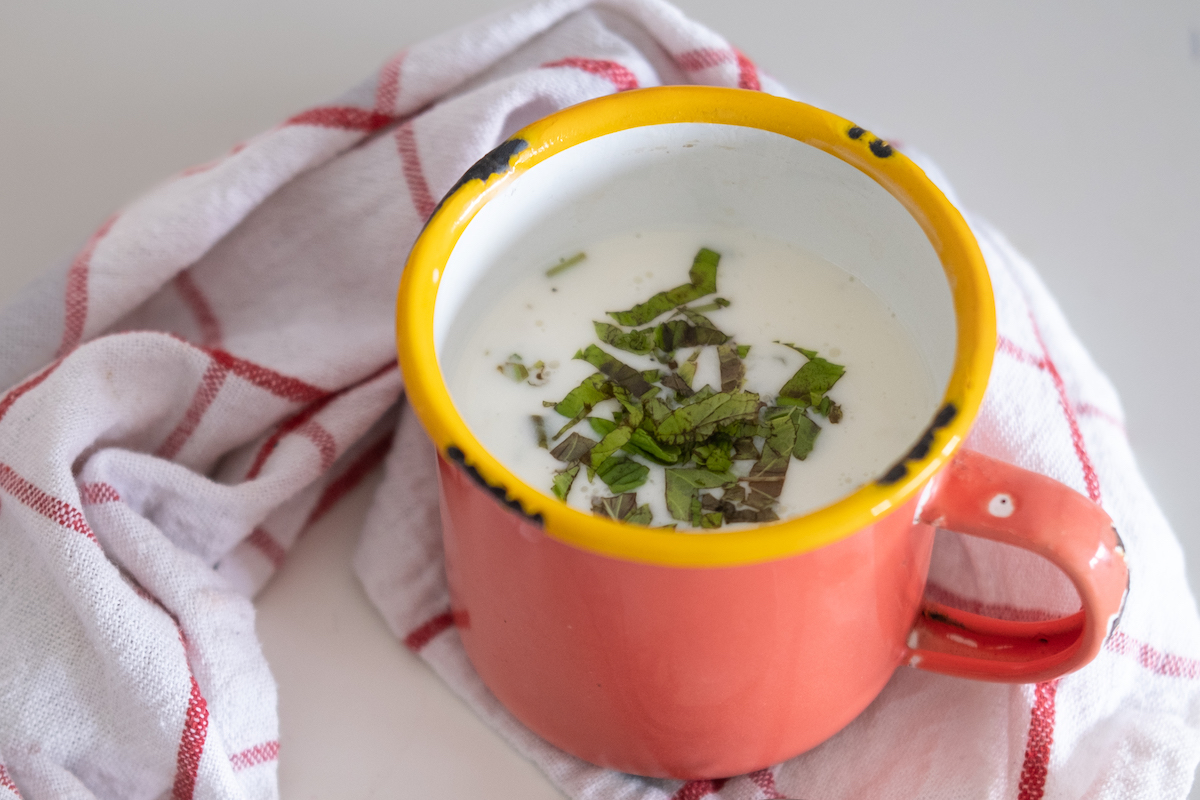
Ingredients for 6 servings:
¼ cup of rice
4 cups water
1 cup Greek yogurt
1 tablespoon of flour
1 egg yolk
1 tablespoon of dried mint
fresh mint for garnish
salt
First start by cooking the rice in water. No, it is not a mistake that we use much more water in this recipe than we normally would use for cooking rice, it creates the base of the soup. While the rice is cooking, mix the yogurt in a large bowl with the egg yolk and flour until it is fully combined. When the rice is completely cooked, add the water one tablespoon at a time to the yogurt mix and fully combine it until there is no free liquid remaining. Put the mixture back into the pot, season it with salt, pepper, and dried mint and cook it altogether until it comes to a boil. You can serve it hot or cold, and sprinkle fresh mint on the top.
Cauliflower Pashtida
Our next dish on the menu is Cauliflower pashtida, known in English as a quiche. Pashtida dishes are popular in Israel, usually served inside a puff pastry or a simple butter-dough crust. This version is a bit healthier, using the cauliflower itself to create the crust.
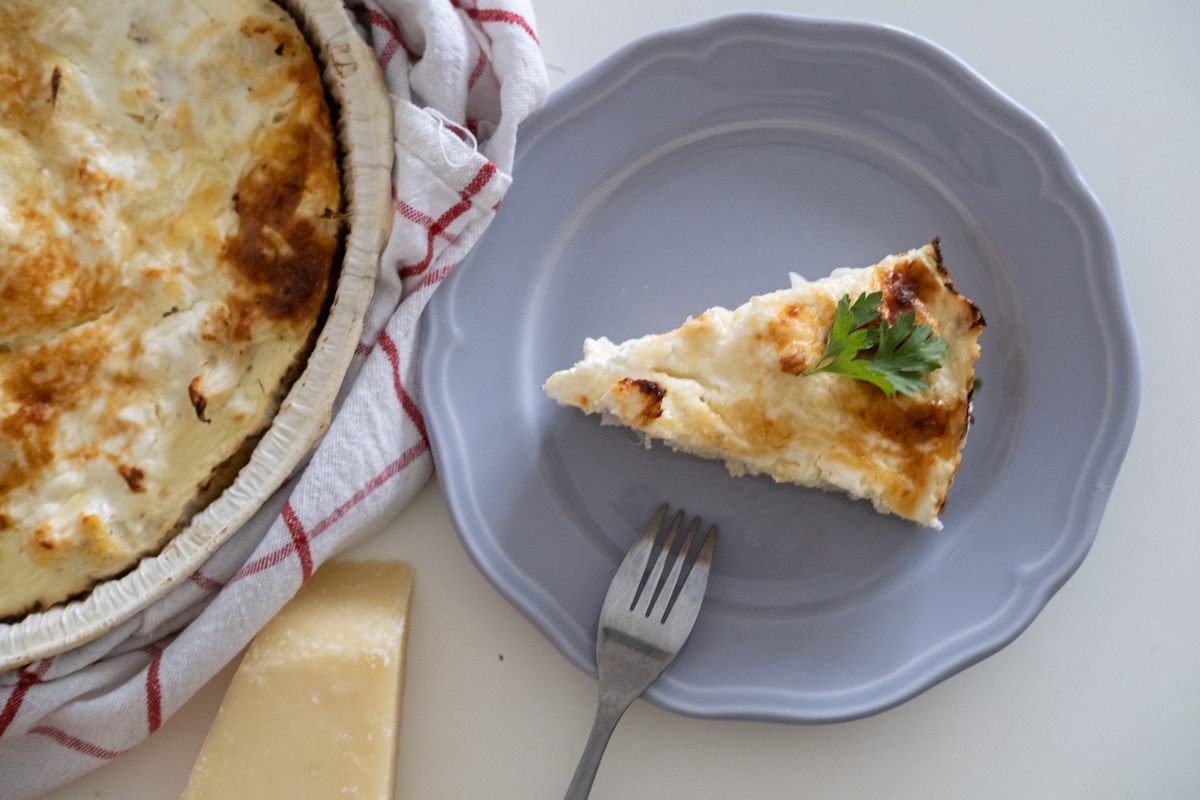
Ingredients for 8 servings:
1 large cauliflower
4 eggs
200 ml / 7oz cooking cream
50 grams Parmesan cheese
125 grams (1 box) of cream cheese
100 grams of grated mozzarella cheese
½ cup bread crumbs
butter
salt
pepper
Begin by cutting the cauliflower in half. Break one of the halves into smaller flowers and cook them in hot water until they are soft. Put the other half into a food processor and chop it until the chopped pieces become the size of couscous. At the same time, boil about 500ml / 17oz water in a kettle. Place a clean kitchen towel into the strainer, then place the chopped cauliflower onto the towel and scald it with the hot water. Press the water out and wait for it to cool. Take the cooled cauliflower and combine with breadcrumbs and two eggs.
In a larger bowl, mix the other two eggs with the cooking cream, the cream cheese, and the cheese, then season with salt and pepper.
For the next step, take a deeper baking pan, butter it, put the cauliflower mix into it and spread it equally on the bottom. Remember to form some height on the sides of the pan in order to create the pie crust.
Fill the pie crust with the cooked cauliflower flowers, pour the eggs and double cream mix on the top, and bake it for about 30 minutes at 375 F / 180 C until the top is golden brown.
Serve it cold, with a green leaf salad on the side.
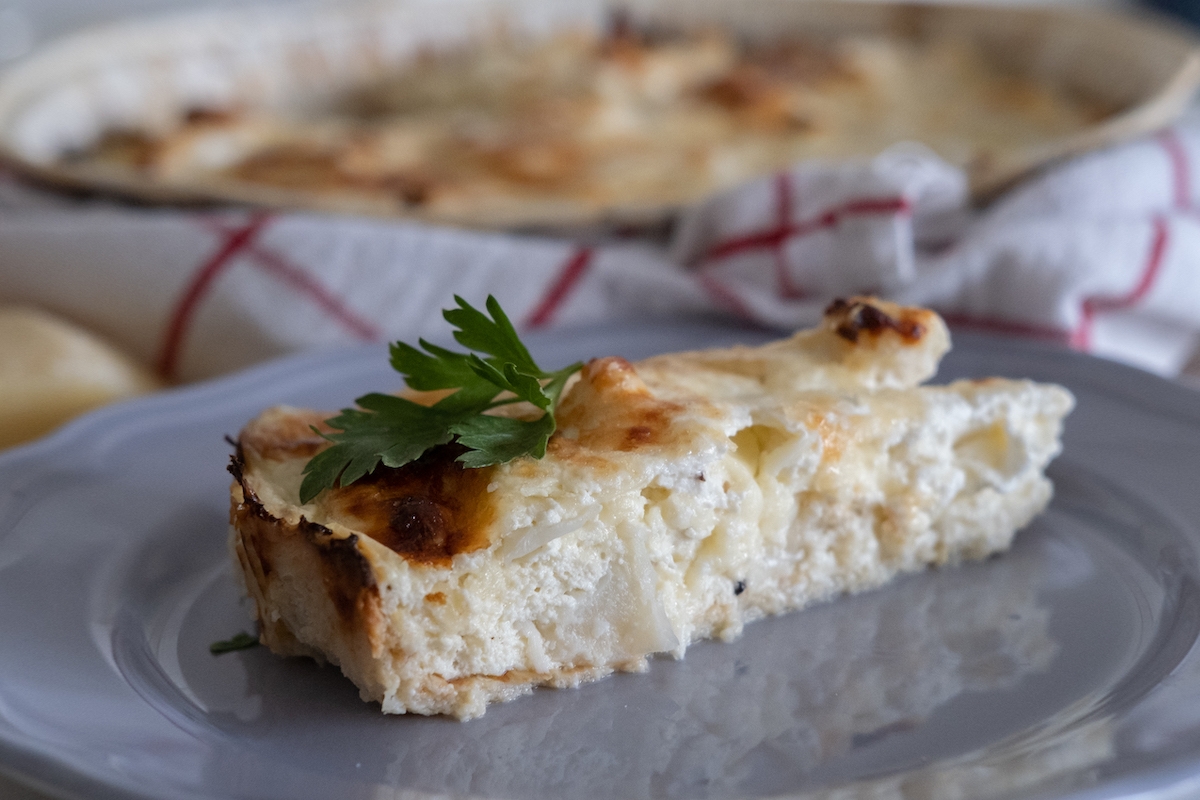
Malabi
Finally, we've arrived at the dessert!
Malabi is one of the most popular traditional desserts in the Middle East, extending from Iran to Egypt. It is actually a milk pudding and this version is made with orange flower water instead of the traditional rose water. As the legend says, it originally was made in the 7th century by a Persian chef for his general, Al-Muhallab ibn Abi Sufra.
Because he loved this dessert so much, he named it after himself.

This recipe contains a couple of Middle-Eastern specific ingredients, such as sugar syrup and orange blossom water, an herbal distillate used in Mediterranean and Mexican cuisine. If you cannot find orange blossom water, you can substitute with two tablespoons of organic orange zest instead. If so, cook the orange zest with the sugar and the milk, so the flavors have a chance to combine. You can also substitute orange-blossom water with rosewater.
Ingredients for 6 servings:
4 cups of milk (use coconut milk for vegan alternative)
1 cup of sugar
5 tablespoons of cornstarch mixed with ¼ cup water
2 tablespoons of orange blossom water (or orange zest)
roasted finely chopped pistachio
date syrup (or honey)
Slow boil the milk and the sugar in a pot at low temperature (be aware not to burn it). When it begins to boil, add the cornstarch-water mix and stir it until it starts to boil again and begins to thicken. This will only take a few minutes. After this, turn off the heat and while stirring, add the orange blossom water. Once fully combined, pour it into four to six smaller cups and wait for it to cool. Add the roasted pistachios and a bit of date syrup or honey just before serving.
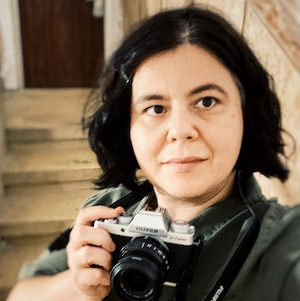
Bea Bar Kallos is a Hungarian-Israeli photojournalist and journalist living in Tel Aviv. Over the years, she received numerous awards for The Hungarian Pictures of the Year and the Israeli Press Photo Contest, Edut Mekomit. Her work has been exhibited in New York, Warsaw, Budapest, Milan, Berlin, Belgrade, Jerusalem and Tel Aviv.













